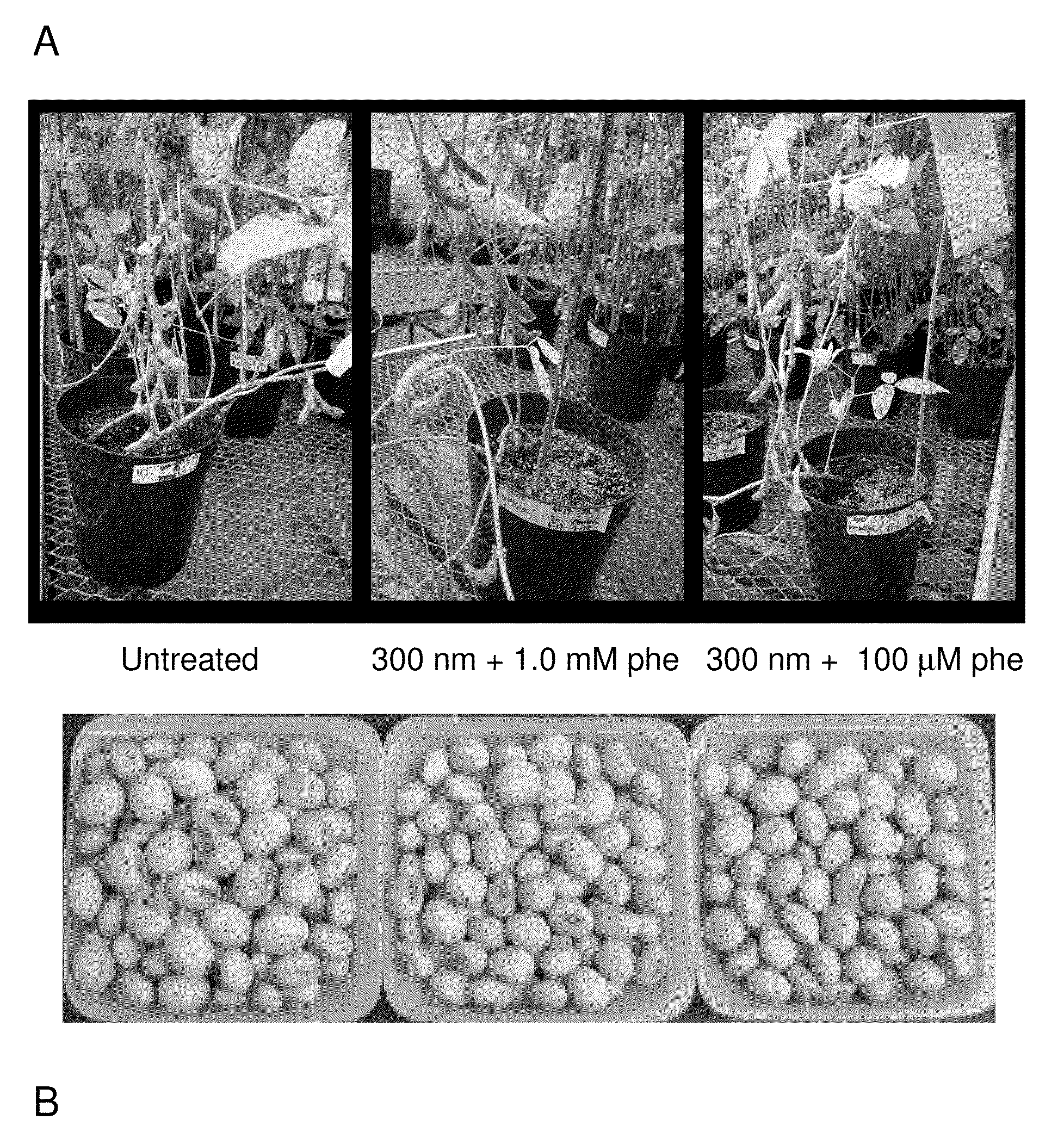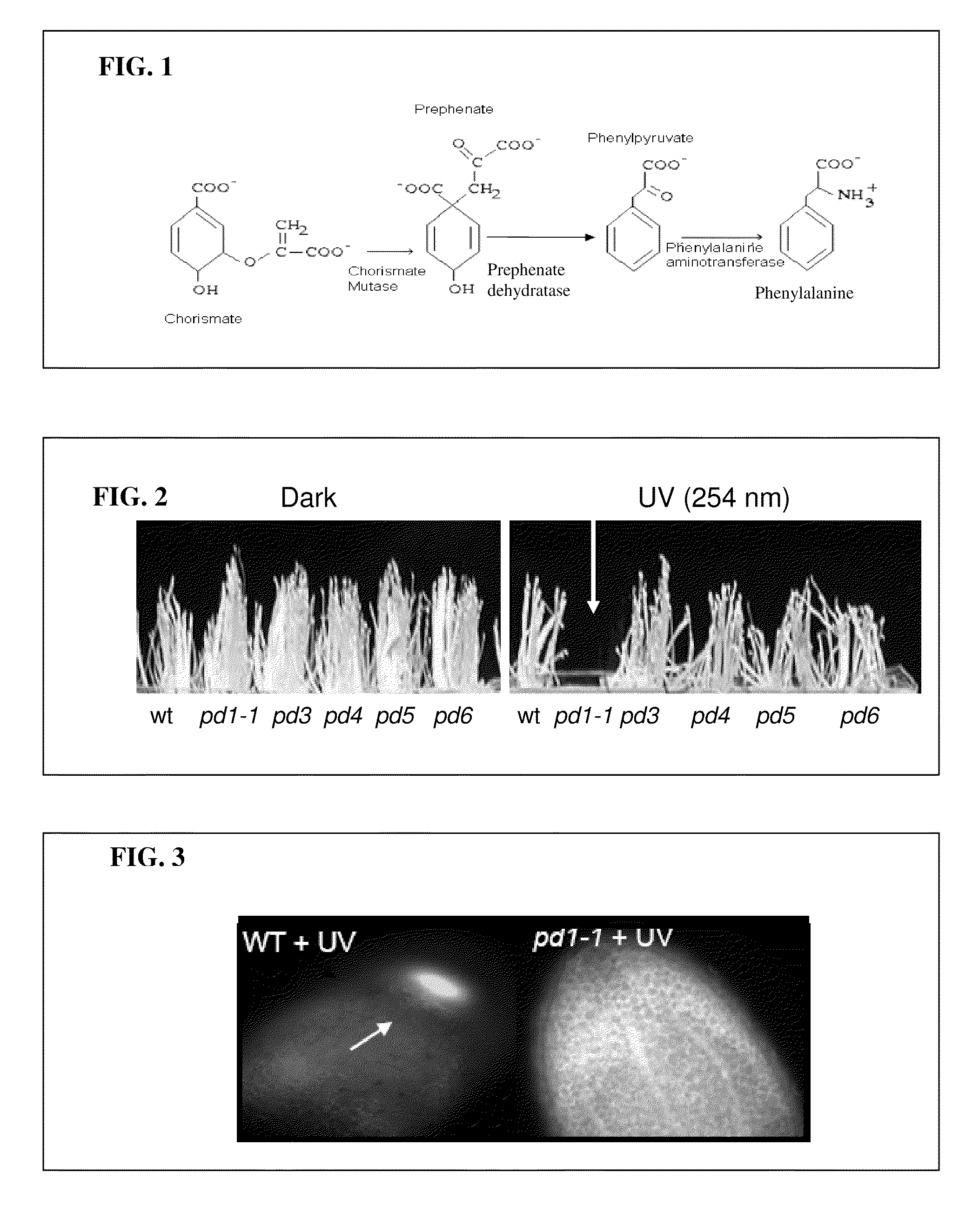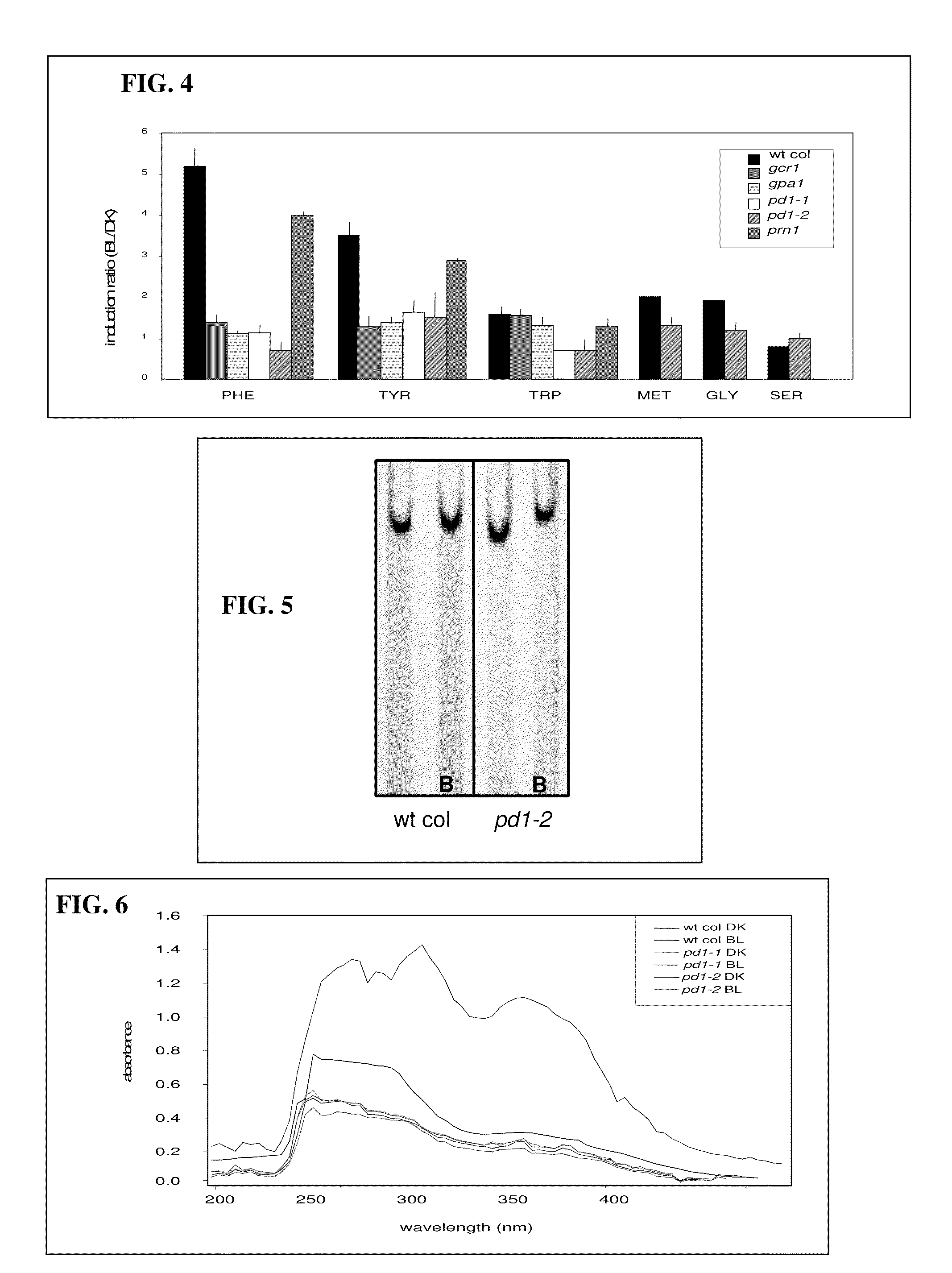Plant biochemical systems and uses thereof
a biochemical and plant technology, applied in the field of plant biochemical systems, can solve the problems of agriculture spending billions a year on preventative and therapeutic treatments
- Summary
- Abstract
- Description
- Claims
- Application Information
AI Technical Summary
Problems solved by technology
Method used
Image
Examples
example 1
The Biosynthetic Pathway, and Regulatory and Feedback Systems Responsible for the Synthesis of Phenylalanine in Etiolated Soybean Seedlings
[0097]Four main experiments are to be carried out: 1. Confirming the presence of cytosolic prephenate dehydratase activity in etiolated soybean and its role in phenylalanine synthesis. 2. Determining the effects of ABA and BL treatment on the activity of cytosolic prephenate dehydratase in etiolated soybean. 3. Characterization of the biochemical feedback effecting cytosolic prephenate dehydrates activity in etiolated soybean. 4. Determining if G-proteins have a role in the BL or ABA regulation of cytosolic prephenate dehydrates activity in etiolated soybean.
[0098]In order to confirm the presence of cytosolic prephenate dehydratase activity in etiolated soybean and its role in phenylalanine synthesis, the following experiments are conducted.
[0099]Developing primary leaves from seven-day-old dark-grown soybean seedlings were harvested into a pre-c...
example 2
Metabolites Made from Phenylalanine Used in Screening / Protection Against UV Radiation
[0110]The regulation of phenylalanine and the metabolites made from phenylalanine in young Arabidopsis and soybean seedlings that are utilized in protection from UV radiation are identified and characterized. Some pigment(s) made in response to UV radiation have been identified that may be used to screen young etiolated seedlings from UV. These pigments are analyzed by HPLC & LC-MS methods. The pigments include anthocyanins, coumarin-related compounds and hydroxylcinnamate-related compounds. The comparisons needed to establish these correlations can be achieved through two non-overlapping means—the use of mutants or varieties that are known to have differing sensitivities to UV and the use of specific environmental conditions (e.g. BL or UV or ABA treatment, or the addition of phenylalanine or tyrosine to the growth media or externally to the plant surface) that result in an altered sensitivity to U...
example 3
Arabidopsis Seedlings have Functional Prephenate Dehydratase Activity, and Phenylalanine Itself Appears to be a Stabilizing Factor in Solutions with Pigments and Other Compounds
[0120]We have developed an assay that can be used to measure prephenate dehydratase activity in Arabidopsis extracts.
[0121]Methods
[0122]Plant growth and irradiations. Six-day-old etiolated Arabidopsis seedlings (Col) were irradiated with a single short pulse of BL with a total fluence of 104 μmols m−2 [Folta and Kaufman, 2003; Warpeha and Kaufman, 1990], and / or UV (300, 317, 366 nm) at the same fluence, or ten-fold higher. UV-B treatments were as described by Warpeha et al. [2007]. Pre-irradiations of BL (104 μmols m−2) were given at 2, 6 and 24 h prior to treatment with UV. Irradiated seedlings were returned to the darkness. Seedlings were harvested at 2 h, 6 h and 24 h post irradiation.
[0123]Preparation of General Extracts. the Aerial Portions of Six-Day-Old Dark Grown Arabidopsis seedlings were harvested i...
PUM
| Property | Measurement | Unit |
|---|---|---|
| height | aaaaa | aaaaa |
| height | aaaaa | aaaaa |
| height | aaaaa | aaaaa |
Abstract
Description
Claims
Application Information
 Login to View More
Login to View More - R&D
- Intellectual Property
- Life Sciences
- Materials
- Tech Scout
- Unparalleled Data Quality
- Higher Quality Content
- 60% Fewer Hallucinations
Browse by: Latest US Patents, China's latest patents, Technical Efficacy Thesaurus, Application Domain, Technology Topic, Popular Technical Reports.
© 2025 PatSnap. All rights reserved.Legal|Privacy policy|Modern Slavery Act Transparency Statement|Sitemap|About US| Contact US: help@patsnap.com



